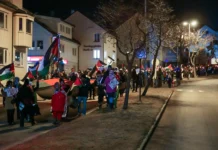New York City’s third World’s Fair opened on this date in Flushing Meadow in 1964. A key figure in the feasibility study that brought the fair to New York was Victor Gruen, an Austrian-born Jewish architect and socialist who was best known as the inventor of the modern shopping mall as well as the outdoor pedestrian mall. New York’s “Master Builder,” Robert Moses, headed the corporation established to run the fair. He ignored the rules of the Bureau of International Expositions, an international standard-setter headquartered in Paris, and BIE responded by telling nations not to participate. The absence of Australia, Canada, the USSR and most major European nations tarnished the exposition and brought it to near financial ruin. Israel also declined to participate, but an American-Israel Pavilion was privately sponsored by American Jews and included a journey-by-diorama through Jewish history from Solomon’s Temple to medieval Spain to colonial America to contemporary Haifa. The Jordanian pavilion, a multi-peaked, domed structure covered with gold mosaic and colored glass, displayed a scale model of the Dome of the Rock as well as a mural portraying a Palestinian refugee cradling her young child in her arms. The painted wall and its accompanying poem became a source of intense controversy for the entire two-year run of the Fair.
“When the American Jewish Congress . . . requested permission to picket the Jordan Pavilion, Moses portrayed his refusal as a defense of the Fair’s honor. . . . The ban on picketing, in fact, was initially a response to opening-day civil rights demonstrations by the Congress of Racial Equality, which protested against the hiring practices of some of the corporate and state exhibitors and agitated for the passage of the civil rights bill pending in Congress. . .” —Emily Alice Katz

























